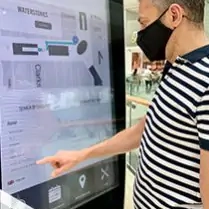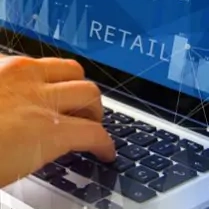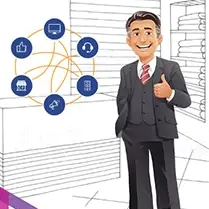
As a retailer, you are most likely already using a retail POS system a retail CRM system. But are you aware of the advantages of having these two systems integrated and working together? If you are, you are already well on your way toward achieving retail success. If you are not, then these programs are probably working against you.
There are many benefits to having an integrated POS and CRM solution including faster transaction time, detailed customer history, and improved customer experience, to name a few. In this article, we will focus specifically on the benefits of capturing detailed customer history, and how the collected data can be used effectively. When your retail POS and CRM are integrated with each other, all your retail sales data is immediately and automatically captured in the CRM – every sale, service request, and customer complaint is logged, giving you a detailed customer profile.
Complete customer profiles provide information that can be extrapolated and applied in a variety of ways.
First, imagine a customer that has come into your retail store — let’s say you specialize in wireless products. The customer browses around for a minute or two and settles on purchasing the latest Bluetooth speaker. When they get up to the till (retail POS solution) for billing, the sales representative scans the item and in doing so, the customer profile is brought forward from the retail CRM software and the sale can be attached to their account. At this point in the integrated system, the sales associate will be able to view this customer’s entire purchase history based on recency-frequency-monetary value and will have access to valuable upgrade information, using which he/she can cross-sell or upsell with additional correlated products, or share deals that may apply to this customer.
Secondly, the customer data you collected can be used to segment your customers as per their purchase history, upgrade eligibility, and even as far as demographic information that can help you identify your purchase audience. The key benefit here is, you can now begin hyper-targeting your customer base and hone marketing efforts based on these unique profiles that bring customers back into stores.
Finally, integrated data collection is a game-changer with the ability to take the customer data and include it in your communication to customers; this is referred to as personalization. The ability to use personalization in your marketing and customer relationship efforts goes a long way, and according to a report by Forrester, the biggest challenges with personalization are gaining insight quickly enough (40%), having enough data (39%), and deciphering what is inaccurate data (38%). With an integrated POS and CRM, these key issues with executing personalization are largely alleviated, connecting the sales and customer data and by displaying the information at the POS.
Think back to that customer who came in and bought the Bluetooth speaker. You have already captured their demographic information and because your CRM and POS are integrated, you now have their sales history including details of the product they bought, the store they bought it in, and the sales rep that sold it to them. With this information, a powerful, personalized email can be created and sent to them to make sure they are enjoying their purchase, generating customer loyalty and mostly repeat business.
So I will ask again, is your POS and CRM integrated with each other and working together?













